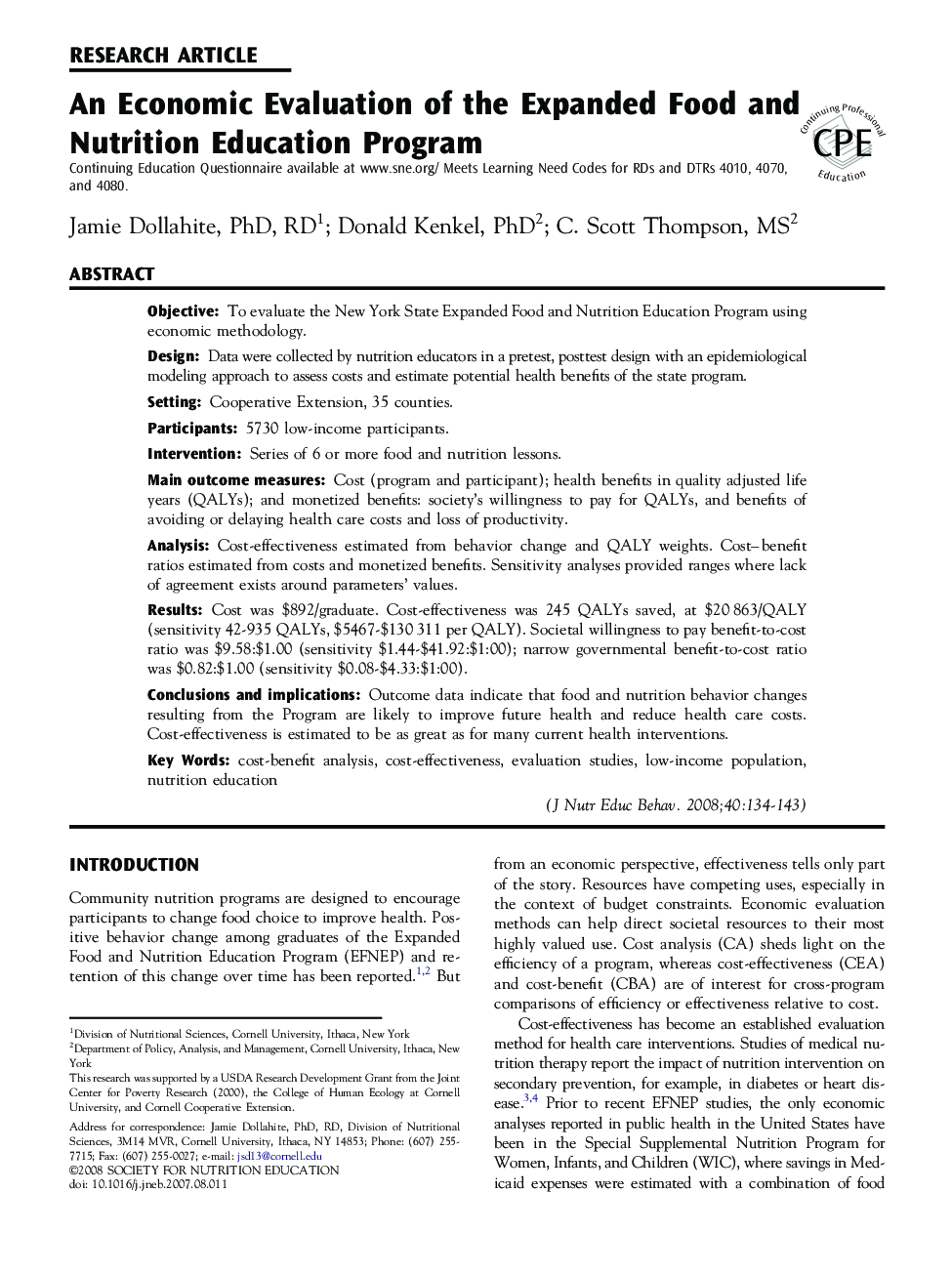| Article ID | Journal | Published Year | Pages | File Type |
|---|---|---|---|---|
| 362891 | Journal of Nutrition Education and Behavior | 2008 | 10 Pages |
ObjectiveTo evaluate the New York State Expanded Food and Nutrition Education Program using economic methodology.DesignData were collected by nutrition educators in a pretest, posttest design with an epidemiological modeling approach to assess costs and estimate potential health benefits of the state program.SettingCooperative Extension, 35 counties.Participants5730 low-income participants.InterventionSeries of 6 or more food and nutrition lessons.Main outcome measuresCost (program and participant); health benefits in quality adjusted life years (QALYs); and monetized benefits: society's willingness to pay for QALYs, and benefits of avoiding or delaying health care costs and loss of productivity.AnalysisCost-effectiveness estimated from behavior change and QALY weights. Cost–benefit ratios estimated from costs and monetized benefits. Sensitivity analyses provided ranges where lack of agreement exists around parameters' values.ResultsCost was $892/graduate. Cost-effectiveness was 245 QALYs saved, at $20 863/QALY (sensitivity 42-935 QALYs, $5467-$130 311 per QALY). Societal willingness to pay benefit-to-cost ratio was $9.58:$1.00 (sensitivity $1.44-$41.92:$1:00); narrow governmental benefit-to-cost ratio was $0.82:$1.00 (sensitivity $0.08-$4.33:$1:00).Conclusions and implicationsOutcome data indicate that food and nutrition behavior changes resulting from the Program are likely to improve future health and reduce health care costs. Cost-effectiveness is estimated to be as great as for many current health interventions.
